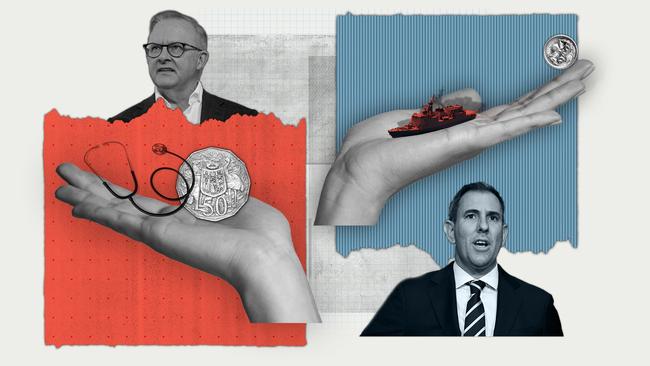Federal budget 2025: winners and losers
A small tax cut combined with deficits as far as the eye can see ensures there are winners to be found — as long as you’re not looking at the bottom line.

Here’s an overview of the key winners and losers from the 2025 federal budget.
WINNERS
Taxpayers
From July 1 next year, wages earned between $18,201 and $45,000 will have their tax rate trimmed from 16 per cent to 15 per cent. This gets cut again to 14 per cent in 2027. A worker on an average wage could save an extra $268 from next year and $536 from 2027-28.
Energy users
Bill relief is being extended by $150 until the end of the year for all households and up to one million businesses.
Those changing jobs
Non-compete clauses, which affect an estimated 20 per cent of workers, will be banned for low and middle-income employees.
Child care
At least three days a week of subsidised early childhood education and care. Wage rises for up to 200,000 early childhood educators and teachers.
Health
A much-touted Medicare revamp aims to make 90 per cent of GP visits bulk-billed by 2030; add 50 Medicare Urgent Care Clinics; result in 2000 new GP trainees a year, and 400 nursing scholarships a year.
The Pharmaceutical Benefits Scheme
As announced, from January 1, the maximum co-payment will be lowered from $31.60 to $25 per script.
Seniors
Pensioners will get a freeze in their PBS medicines, amid a cap of $7.70 per script. The budget has allocated $2.6bn for pay rises for aged care nurses.
Public hospitals
In 2025-26, the total contribution to state-run hospitals will rise by 12 per cent to $33.9bn.
Consumers
The ACCC will target supermarket pricing and “unfair, excessive” credit card surcharges.
Women’s health
New contraceptive pills and menopausal hormone therapies will be added to the PBS. Eleven new endometriosis and pelvic-pain clinics will be added. New endometriosis medicine listed on the PBS will benefit about 8500 women each year.
Beer drinkers
A two-year freeze on draught beer excise.
Student-debt repayments
Those on the Higher Education Loan Program will get a 20 per cent reduction in their debt, benefiting three million Australians. From July 1, the salary threshold to start loan repayments will be $67,000 — up from $54,435.
Low-income earners
Raising of the Medicare threshold by 4.7 per cent, meaning one million Australians will be exempt, or pay a minimum rate.
Aspiring homeowners
Expansion of Help to Buy scheme for 40,000 people over the next four years.
Renters
Increase in the maximum rate of rent assistance by 45 per cent for about 1 million households. Tax breaks for build-to-rent development, estimated at providing 80,000 new homes in the next decade.
Cyclone and flood-affected
Up to 13 weeks income support, and a one-off disaster recovery payment.
Construction sector
Doubling of maximum incentive payments for eligible apprentices from $5000 to $10,000.
TAFE
100,000 free TAFE places every year from 2027.
Small business
Grants of up to $25,000 for energy use and efficiency for upgrades such as replacing inefficient appliances, water heating systems.
NBN
Upgrades to a further 622,000 premises.
Road, rail projects over the next decade
$7.2bn for the Bruce Highway in Queensland; $1bn for Sydney’s rail network; $2bn for Melbourne’s Sunshine Station.
‘Green’ metals
The $2bn Green Aluminium Production Credit, available from 2028–29, will support aluminium smelters to transition to renewable electricity and decarbonise. The $1bn Green Iron Investment Fund aims to establish an Australian green iron industry by providing capital support.
LOSERS
The balance sheet
An aggregate deficit of $180bn by 2028-29, when gross debt will top more than $1.2 trillion.
National security
Defence spending of $1bn will be brought forward but this is not new money, and lifting spending from 2 per cent of GDP to 2.33 per cent won’t please our US partners.
Foreigner investors
Foreigners banned from buying existing dwellings for two years.
Foreign arrivals
A forecast cut in net overseas migration from 435,000 in 2023-24 to 225,000 in 2026-27 and 2027-28.
NDIS frugality
The National Disability Insurance Scheme will cost $48.5bn this financial year, rising to $63.4bn by 2028-29 and making it third in the top programs by expense.
Dodgy traders
In addition to increased funding for the consumer watchdog, extra monitoring on surcharging and subscription traps.




To join the conversation, please log in. Don't have an account? Register
Join the conversation, you are commenting as Logout